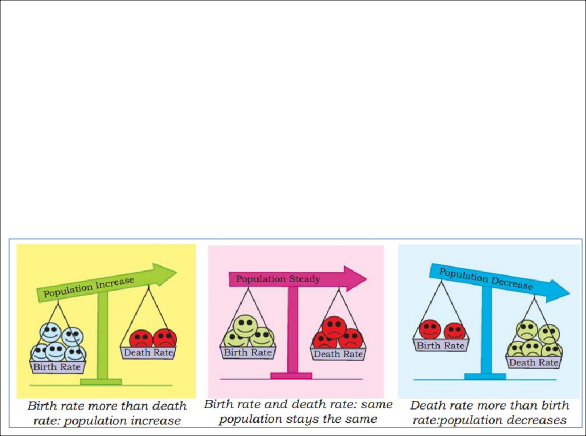4.2.3. Social and Cultural Factors

Population growth
The population growth or population change refers to the change in number of inhabitants of a territory during a specific period of time. This change may be positive as well as negative. It can be expressed either in terms of absolute numbers or in terms of percentage. Population change in an area is an important indicator of economic development, social upliftment and historical and cultural background of the region.
Growth of Population: Change of population in particular area between two points of time is known as growth of population. For example, if we deduct the population of India 1991 (84.63 crore) from population of 2001 (102.70 crore) then we shall get the growth of population (18.07 crores) in actual numbers.
Growth Rate of Population: This is the change of population expressed in percentage.
Some places attract more people because they have religious or cultural significance. In the same way – people tend to move away from places where there is social and political unrest. Many a time governments offer incentives through various types of policies to people to live in sparsely populated areas or move away from overcrowded places.
